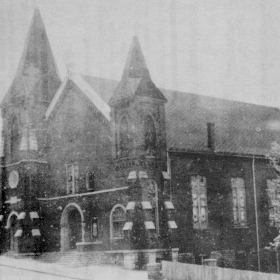FIRST COLORED BAPTIST CHURCH (1848-1891)
 With the formation
of the new Christian (Disciples of Christ) Church, most members defected
from the First Baptist Church. It was not until the calling of Reverend
Peter S. Gayle in 1831 that the congregation began to grow. In 1934, he
was replaced by the Reverend Robert Boyte Crawford Howell.
With the formation
of the new Christian (Disciples of Christ) Church, most members defected
from the First Baptist Church. It was not until the calling of Reverend
Peter S. Gayle in 1831 that the congregation began to grow. In 1934, he
was replaced by the Reverend Robert Boyte Crawford Howell.
Linda T. Wynn